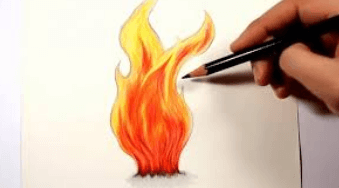Drawing:Ir6gbg1cz8w= Flames

The art of drawing flames is both intricate and rewarding, requiring a nuanced understanding of the physical properties that govern their behavior. Artists must consider not only the vibrant colors that characterize flames but also the techniques that best capture their dynamic essence. By exploring various mediums and mastering layering and blending techniques, one can evoke the movement and luminosity inherent in fire. As we examine the interplay of these elements, intriguing questions arise about the choices artists make and the effects they aim to achieve in their representations.
Understanding Flame Dynamics
Flame dynamics, often characterized by the intricate interplay of heat, fuel, and oxygen, fundamentally govern the behavior and appearance of flames in various environments.
Understanding combustion reactions reveals how different materials produce unique flame colors, ranging from vivid blue to intense yellow.
This knowledge empowers artists and enthusiasts to capture the essence of flames, embracing the freedom to explore their mesmerizing beauty in creative expressions.
Read more: Drawing:Inkzdtssqfq= Cute Pictures
Techniques for Capturing Light
Capturing the ethereal quality of light produced by flames requires a mastery of both technique and equipment, enabling artists to convey the vibrant energy and dynamic movement inherent in their subject.
Focus on light reflection to create depth, while employing color blending to replicate the rich hues of flames.
Experiment with layering techniques to enhance luminosity, bringing your fiery illustrations to life with intensity and realism.
Choosing the Right Medium
Selecting the appropriate medium is vital for effectively conveying the intricate interplay of light and color found in flames, as each material offers unique properties that can enhance the vibrancy and movement of your artwork.
Charcoal provides rich depth, while pastels allow for soft blending.
Consider digital techniques for versatility, or traditional methods for texture, ensuring your choice aligns with your artistic vision.
Read more: Drawing:Epqmli39czy= Santa
Conclusion
In summation, the art of drawing flames necessitates a comprehensive grasp of their dynamic nature and an adept selection of techniques and mediums.
Mastery in layering and color blending can evoke the luminosity and movement inherent in flames, much like a painter of the Renaissance would capture the play of light and shadow.
By understanding these elements, artists can effectively translate the mesmerizing essence of flames onto their canvas, illuminating their artwork with vibrancy and life.




